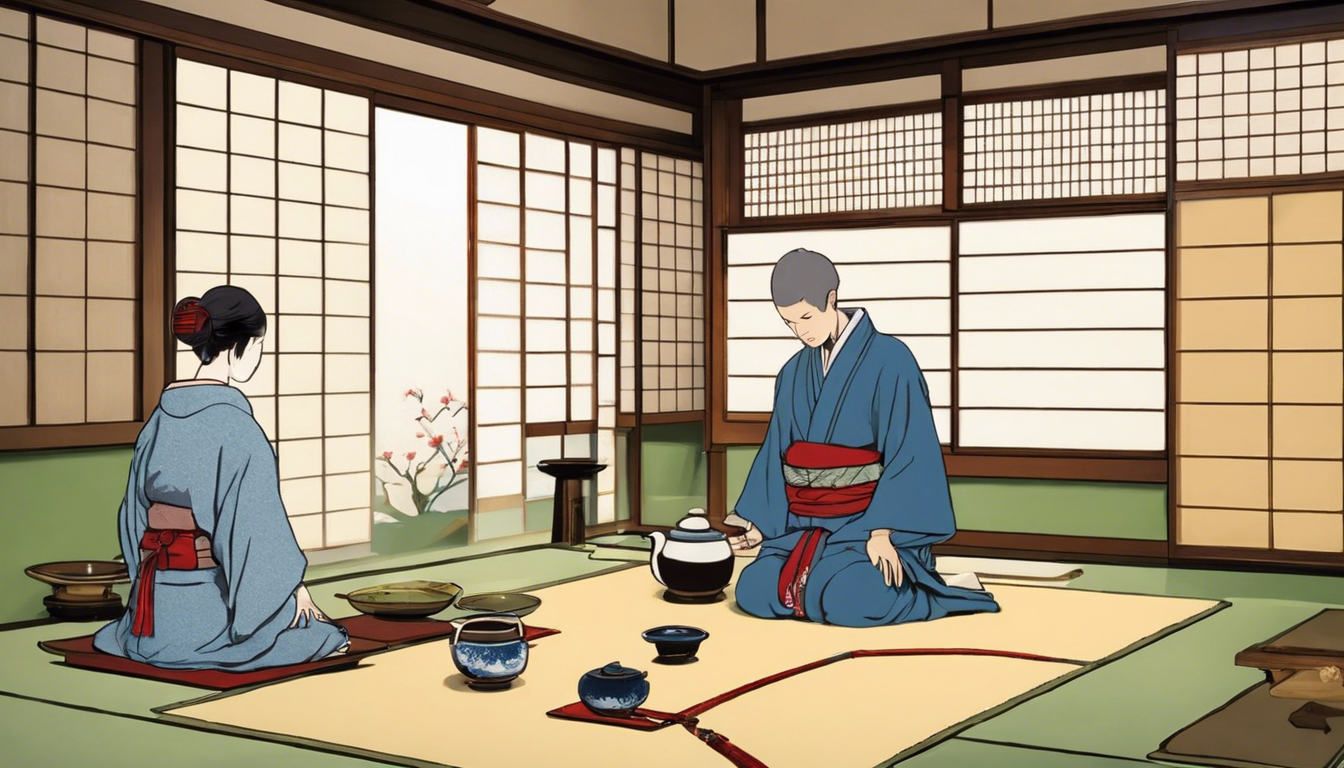If you’re a foodie looking to immerse yourself in Japan’s rich culinary culture, the Japanese tea ceremony offers a unique experience that goes beyond just sipping tea.
Steeped in history and tradition, this serene ritual invites you to slow down and appreciate the beauty in simplicity while exploring the lush landscapes of Tokyo.
Join us as we delve into the art of the Japanese tea ceremony, uncover its nuances, and guide you to the best venues where you can participate in this meditative practice.
Summary Highlights
- The Japanese tea ceremony is steeped in history and rich cultural significance.
- Understanding the key elements of the ceremony enhances your participation experience.
- Tokyo offers a variety of top tea houses to choose from for an authentic tea ceremony.
- Being aware of cultural etiquette ensures a respectful and enjoyable experience.
- Engaging in a tea ceremony provides meditative benefits that promote mindfulness.
The Historical Significance of the Japanese Tea Ceremony
The Japanese tea ceremony, or ‘chanoyu,’ is not just about sipping delicious matcha; it’s a profound cultural practice steeped in history, particularly in places like Tokyo where the traditional meets the modern.
Originating in the 12th century, this ritualistic event embodies a philosophy of harmony, respect, and tranquility, making it a beautiful experience for foodies eager to dive into Japan’s rich culinary traditions.
Picture yourself in a serene tea room, surrounded by minimalistic decor, as a skilled host meticulously prepares the frothy green tea.
The attention to detail—from the way the tea is whisked to the delicate serving of seasonal sweets—offers a glimpse into Japan’s artistry and its appreciation for the present moment.
For today’s food enthusiasts, understanding the tea ceremony is like tasting a piece of history, where every cup not only elevates the senses but also connects you to centuries of cultural heritage right in the bustling heart of Tokyo.
Understanding the Ritual: Key Elements of the Ceremony
When we think about the Japanese tea ceremony, especially in the vibrant heart of Tokyo, we can’t help but be drawn into a rich world that’s steeped in tradition and precision.
This beautiful ritual, known as chanoyu, goes far beyond merely sipping tea; it’s an art form that encompasses every detail, from the meticulous preparation of matcha to the tranquil atmosphere that envelops the participants.
Key elements of the ceremony include the choice of utensils, meticulously selected seasonal flowers, and even the type of sweets served, all crafted to enhance the experience and provide a moment of calm.
Participants engage in a thoughtful exchange, emphasizing mindfulness and respect, as they appreciate the flavors and aesthetics presented before them.
Whether you’re a seasoned foodie seeking to dive deeper into culinary traditions or a curious novice excited to sample matcha, attending a tea ceremony in Tokyo offers a sublime opportunity to savor the delicate balance of flavor and experience in a serene setting.
‘The tea ceremony is a coalescence of all that is beautiful, the ritual of serving tea is an act of love—a way to express appreciation and respect for both the universe and friend.’ – A Japanese proverb.
Choosing the Right Venue: Top Tea Houses in Tokyo
When it comes to experiencing the art of the Japanese tea ceremony in Tokyo, choosing the right venue is key, and the city is home to some of the best tea houses that offer this immersive cultural experience.
Imagine stepping into a serene space adorned with tatami mats and shoji screens, where you can sip matcha expertly whisked to perfection while learning about the intricate rituals that accompany each sip.
Places like the historic Hamarikyu Gardens not only provide stunning views but also offer tea experiences steeped in tradition.
If you’re on the hunt for a more intimate setting, consider the charming, hidden gem of Urasenke Foundation, where skilled tea masters guide you through every step.
For those who want a unique twist, the tea house in the fashionable district of Omotesando blends modern aesthetics with traditional practices, enriching your experience with a contemporary spin.
No matter where you choose, delving into a Japanese tea ceremony in Tokyo will surely delight your taste buds and expand your culinary horizons!
Participating in a Tea Ceremony: What to Expect
If you’re a foodie embarking on a culinary adventure in Tokyo, participating in a Japanese tea ceremony is an absolute must!
Imagine stepping into a serene tatami-matted room, where the air is infused with the delicate aroma of matcha.
As you take your place on the zabuton cushions, the host elegantly prepares the tea in a meticulously choreographed process that reflects centuries of tradition.
Expect to witness each movement, from whisking the bright green powder with hot water to serving the tea in beautifully crafted tea bowls, as a form of art.
You’ll learn about the significance of each step, from the selection of the tea and utensils to the seasonal influences that inspire the ceremony’s aesthetics.
And of course, don’t be shy about savoring the rich, umami flavors of the matcha paired with traditional sweets.
This experience isn’t just about drinking tea; it’s a feast for the senses and a chance to immerse yourself in Japan’s profound cultural heritage!
Cultural Etiquette: Do’s and Don’ts
If you’re lucky enough to experience a traditional Japanese tea ceremony in Tokyo, it’s essential to embrace the cultural etiquette that comes with it to truly appreciate this beautiful ritual.
First and foremost, remember that this isn’t just about sipping tea; it’s an art form steeped in history and respect.
Do arrive on time, as punctuality is greatly valued.
When you enter the tea room, a polite bow is customary, and take a moment to admire the carefully arranged decor, as everything has meaning.
When offered tea, don’t forget to turn the cup slightly in your hands before taking a sip, as a way to show appreciation for its presentation.
While it’s tempting to dive right in, make sure to observe and mirror the actions of your host, as this can help you navigate the intricate social cues of the ceremony.
On the flip side, don’t talk with your mouth full, and avoid reaching across the table or making too much noise; quiet contemplation is part of the charm here.
By respecting these do’s and don’ts, you not only enhance your own experience but also pay homage to a centuries-old tradition.
Frequently Asked Questions
What is the Japanese tea ceremony?
The Japanese tea ceremony, or ‘chanoyu’, is a traditional ritual where powdered green tea (matcha) is ceremonially prepared and served.
It emphasizes mindfulness, aesthetics, and the beauty of simplicity, making it a serene experience.
Where can I participate in a Japanese tea ceremony in Tokyo?
Tokyo offers a variety of tea houses where you can experience the tea ceremony.
Some of the top venues include Hamarikyu Gardens, Chasyu, and En Tea House, each providing a unique setting and atmosphere.
What should I wear when attending a tea ceremony?
While there’s no strict dress code, wearing comfortable and respectful clothing is recommended.
If you want to embrace tradition, consider wearing a kimono, though casual clothing is perfectly acceptable too.
What are the key elements of a Japanese tea ceremony?
Key elements include the tea room setting, the utensils used (like the tea bowl and whisk), the preparation and presentation of the tea, and the mindfulness practiced throughout the ceremony.
Each step is performed with great care to promote tranquility.
Are there any cultural etiquette rules to follow during the tea ceremony?
Yes, there are several cultural etiquette rules to keep in mind.
Some key practices include bowing slightly when receiving tea, avoiding loud conversations, and expressing appreciation for the tea served.
It’s important to observe and follow the host’s lead.







